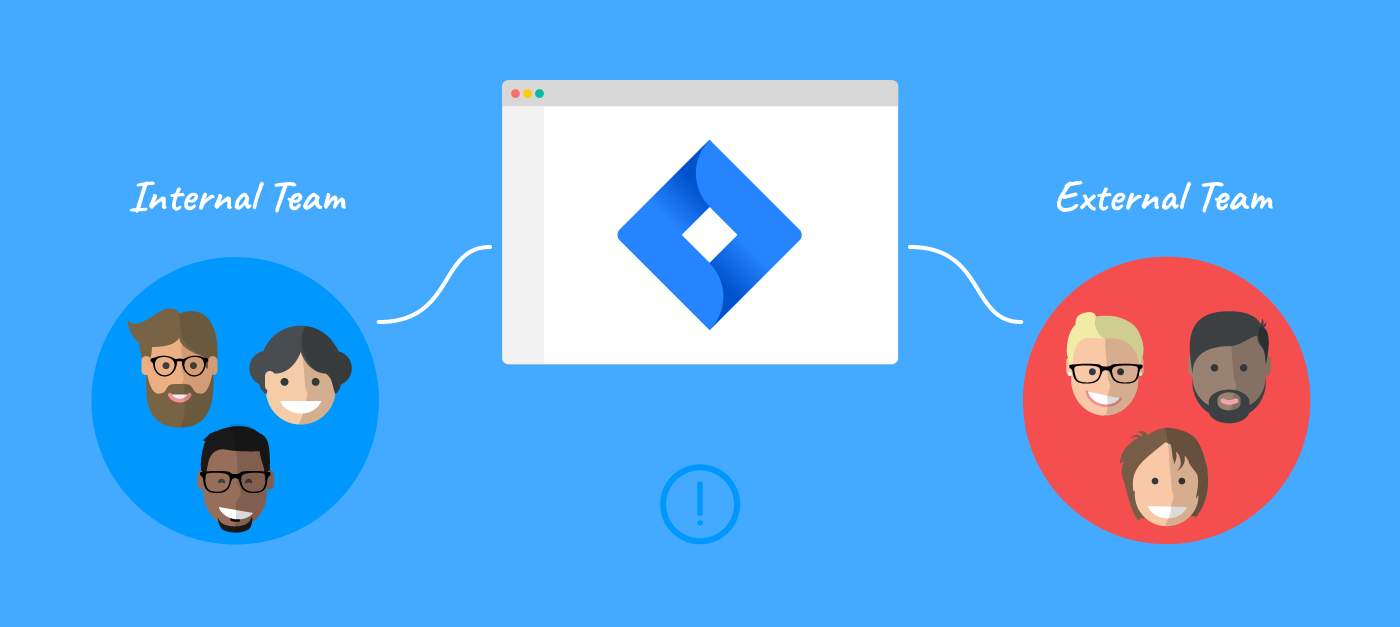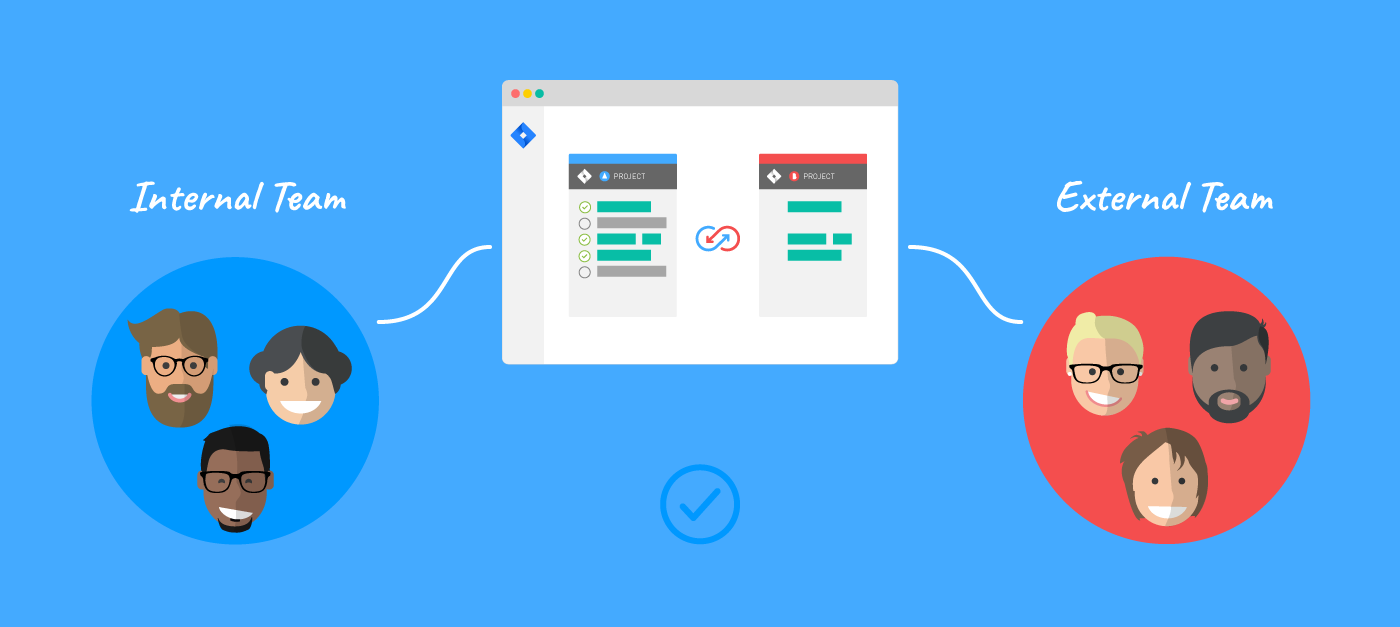Openness is a fundamental characteristic of our favorite agile development tool, Atlassian Jira. This 'open by default' quality is one of the things that differentiates many Atlassian tools from their competitors, in fact. And it's no surprise that this philosophy is built into the Jira product, since Atlassian really does live their Open company, no bullshit value, preferring as much internal information as possible to be accessible to their teams and partners.
We've found however, that when project demands require collaborators to limit Jira's transparency, things get tricky. This is where having a way to sync Jira issue data between separate projects within an instance can be a game changer, taking the pain out of managing who has access to what.
Clients and Consulting Partners Have Different Information Needs
A prime case for limiting Jira's transparency that we often see both inside and outside of K15t, is with consulting projects. While sharing a platform like Jira to manage a project is essential for efficient communication and achieving a common understanding between the client and the service provider, the information that each side actually needs to access differs dramatically.
For consultants to do their best work they have to be able to share information freely with one another, without the risk of internal discussions being communicated over to the clients. The customers' voice however is crucial, so they also need to be able to interact with members of the consulting team at certain points to move the project along. And of course the client requires visibility into the project to let them know that everything is (or isn't) on track.
Some organizations maintain a customer-facing ticketing or project management system, and mandate copy-paste workflows in order to get the relevant updates transferred over to a separate system for the consulting partners. This is obviously a painful and inefficient process – whether utilizing Jira or another tool – and not least for the hapless folks tasked with performing all of that copy-pasting.
Two Parties, One Jira Instance, Many Challenges
To solve the problems of using two different systems as described above, some organizations use a single shared instance of Jira for both the clients and the consulting partners. Jira defaults to open transparency of issue data in such scenarios, which isn't ideal when the two parties need to see different information. There are ways to limit this visibility out of the box, but they come with compromises. Below are two common examples.

For issue data, using the issue security level is an effective way to limit visibility. There are some drawbacks, however:
-
No option to hide only some of the information in an issue, only entire issues
-
Users may inadvertently create issues with no security level attached, exposing sensitive internal information
-
If an issue is cleared of sensitive information and made public at a later point, the issue's history will still contain the sensitive info
For comment communication, changing the security levels of comments can hide them. There is a major drawback here as well, though:
-
Users may unintentionally create comments with no security level attached, exposing sensitive information
The Solution: Sync Jira Data Between Two Projects in the Same Instance
Instead of using ugly copy-paste workflows across instances and projects, and instead of accepting painful compromises from having consultants and clients sharing a single Jira project, issue data synchronization with an app such as Backbone Issue Sync offers an elegant solution within a single Jira instance.

Here's how it works:
-
Create an internal project where all consulting partners, developers, and project collaborators can work freely in the way that suits them best
-
Configure a second external project on the same instance where customers can collaborate and interact with the consulting team
-
Install Backbone Issue Sync for Jira and configure synchronization of both projects on the same instance
This approach enables the project team to keep the full range of Jira functionality that supports their preferred way of working. It also gives customers a single portal for collaboration, feedback, and up-to-date information.
On a practical level, the customer team only sees data fields that are transferred to their project via the Backbone configuration. Whenever a client makes changes in Jira, the consulting team will be notified. They can easily see what changed, and decide how to act on it internally with their own team inside of their own project.
Syncing Consultant and Client Jira Projects Brings Big Benefits
Flexibility and control – The consulting partner team has robust control over exactly what types of data to synchronize with a client, and can easily tailor the synchronization to the needs of each individual project.
Directionality of every part of the sync can also be configured. For example, the customer project can be set to only enable the creation of new issues and commenting on existing ones, with those two data types being pushed over to the internal team's project. Release planning, effort estimates, and distribution of responsibilities can be restricted to the consulting team side. Data such as open comments, statuses, and workflow states can be mirrored between the two, or pushed from one project to the other as needed.
Happy consulting partners – Partners can now work in the same Jira instance as their clients, with the freedom to configure projects in the way that helps them do their best work. They never have to wonder whether points of communication with the customer are being missed, or if the scope and progress of the work is meeting customer expectations. The shared understanding and ease of communication can help consulting partners work much more efficiently.
Happy clients – From the client perspective communication is now quicker, easier, and more transparent, with both teams being able to comment to one another without losing information to the depths of private email threads. Clients can write comments and engage the partner team at will, but they're saved the confusion of seeing internal discussion threads on the consultant side.
Through issue data synchronization, the customer has clarity regarding the status of issues and where they are in the workflow process, which helps immensely in building trust and confidence in the client-partner relationship.